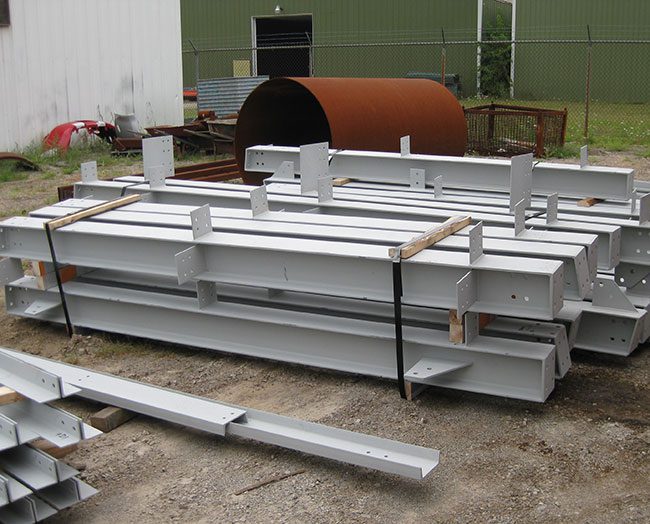What Is Structural Steel and How Is It Created?

One of the most important resources in construction, whether it be building bridges, buildings or other large structures, is structural steel. The material has a long list of benefits that are imperative to companies that build and maintain our country’s infrastructure.
For many projects, structural steel forms the backbone. That’s why it is so imperative that the complex and demanding process that is required to form the material and adapt it to whatever it will become a part of are so important. When it’s not handled correctly, there are obvious risks associated with a project’s long-term viability.
How is it made?
While the shorthand version of how structural steel is created involves heating iron up and adding certain substances to achieve specific properties, the long version is much more involved.
Raw iron is the chief ingredient, but it is rarely found pure in nature. Most often it already contains carbon, but usually in too high a concentration. Some carbon needs to be removed, but not all. Because of that, the manufacturing of steel products can be an involved process.
- First, the raw iron ore is crushed and sorted. There are a number of different refining processes, all designed to sort out the best grades of iron, usually around 60 percent.
- Ore is loaded into a blast furnace from the top and heated, while hot air is blown into the furnace from the bottom. The reaction that takes place begins to remove impurities as pure iron sinks to the bottom of the furnace.
- The molten iron is drawn off and is further heated to allow the inclusion of other substances, such as manganese, that deliver different properties to the finished steel product.
Once the steel has been created, it is formed into a number of different configurations, depending on how it will be used. Beam, channel, angle, plate and hollow steel tube are the most common.
How is it different?
There are a number of different configurations you can find it in, but for the most part, it is all the same stuff inside. Just like other types of steel, the main components are iron and carbon. The more carbon that is added to the alloy, the higher the strength and lower the ductility of the finished product. Other chemicals or substances can be added in the production process that can:
- Improve strength
- Deliver more or less ductility
- Improve the economics of use
One of the most common additions to structural steel, after iron and carbon, is manganese. Manganese improves the machinability of steel, and also help bind steel better to resist cracking and splitting during the rolling process.
The ratio of carbon in structural steel is important when considering how the metal will be used. While lower carbon content makes it easier to weld, it also can make the material harder to work with overall, which lowers the speed it can be constructed with. Finding the perfect balance is important when considering its use.
The resulting steel product has an excellent ratio of low weight to immense strength, making it the perfect construction material.
- Large buildings benefit from the speed of construction.
- Industrial buildings can be built cheaper and repaired more easily
- Residential living spaces benefit from increased strength and durability
- Structural steel is advantageous for bridges due to its low weight and high strength
Fabrication
Even after it has been formed into shape, structural steel still requires fabricating and welding. A skilled fabricator or welder can take advantage of the relative malleability of structural steel to create whatever shape is needed for a specific application.
Welding is largely replacing riveting as the chosen method of fabricating structural steel, and with good reason. Welded structures are:
- Lighter than similarly riveted structures
- More cost-effective
- Easier to navigate and mold than their riveted counterparts
For all your structural steel needs, contact our team at Swanton Welding Company. We’ve been serving Ohio as one of the state’s largest metal fabricators since 1985. We’ve got the service and expertise to exceed all your metal fabricating expectations.
